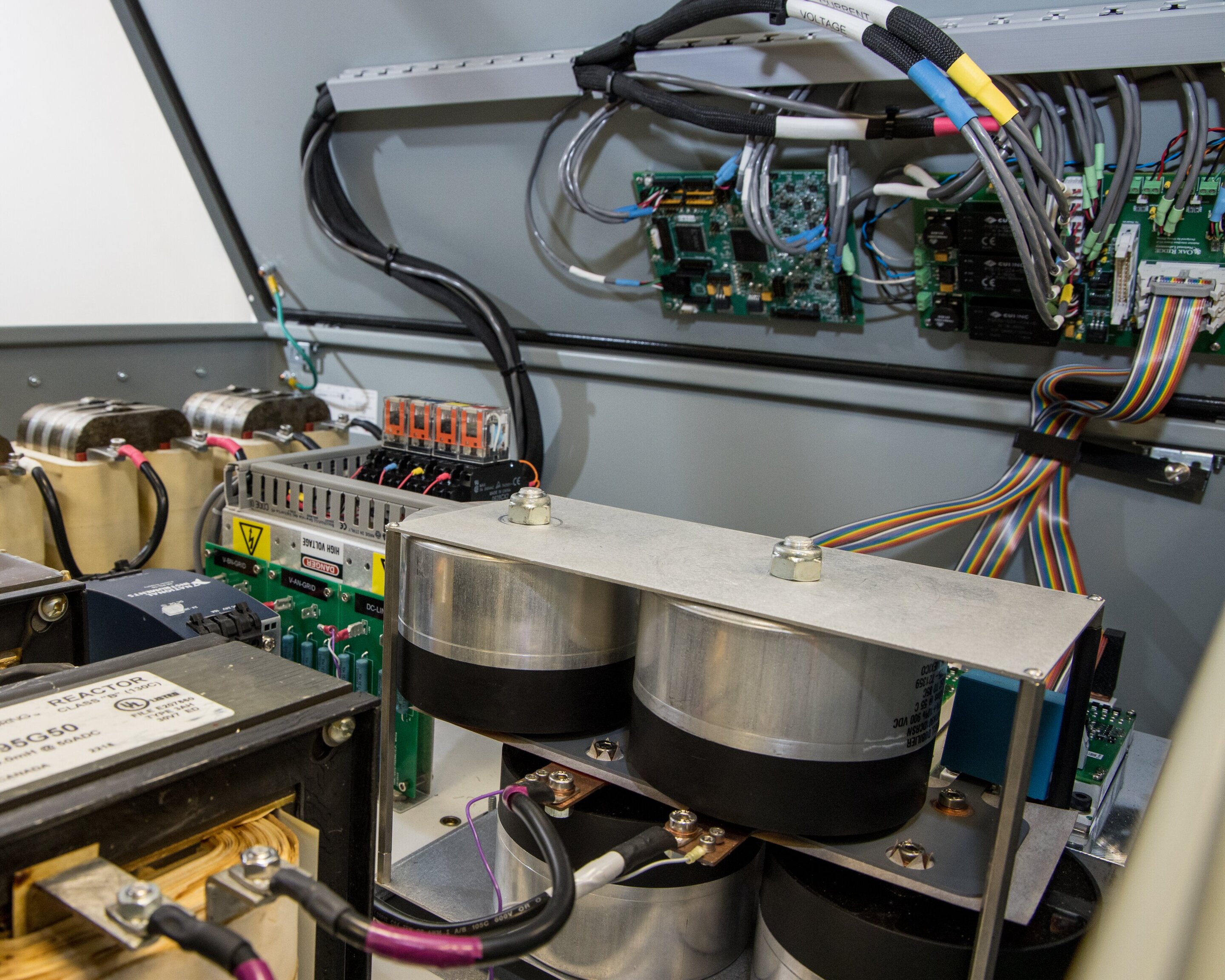
Researchers at Oak Ridge National Laboratory have developed an innovative control system for repurposed electric vehicle battery packs to store electricity for home use and are scaling up the technology to a large, power grid-level project.
Even after batteries have reached the end of their first useful life powering electric vehicles, or EVs, there's still plenty of juice left. These packs may no longer be able to stand up to the extreme charging and discharging conditions for EVs, but they still have serviceable life as a low-cost option for stationary energy storage—by some estimates, up to 10 more years of a second life.
The repurposed batteries are an ideal candidate for grid energy storage, which is essential to keep power demand and supply balanced as more renewable, intermittent generation sources are installed across the nation. Renewables such as solar, wind and hydropower generated about 17% of electricity in the United States in 2018, according to the U.S. Energy Information Administration. More renewable energy sources are being installed at homes and businesses.
But the cost of onsite energy storage systems using new batteries is still quite high.
"Developing new technologies for energy storage is essential to a well-balanced, modern power grid increasingly reliant on renewable, distributed energy," said Imre Gyuk, director of Energy Storage Research at DOE's Office of Electricity. "This project also supports a circular economy by reusing a valuable commodity, minimizing waste, and ensuring reliable, secure delivery of electricity for a robust economy."
The potential for low-cost, repurposed battery energy storage is enormous. About 1 million EVs are on the nation's roadways currently, with the Edison Foundation predicting another 18.7 million EVs by the year 2030, or about 7% of total vehicles, all powered by battery packs.
ORNL researcher Michael Starke has been leading a project supported by OE's Energy Storage Program to create and enhance controls for secondary-use battery energy storage, including deployment and testing of a 15-kilowatt system at a Habitat for Humanity home site in North Carolina, as well as testing at a research house ORNL maintains in a neighborhood near the lab.
Using the software and power electronics hardware developed by Starke and his colleagues, the secondary-use battery system is designed to reduce a home's purchases from the utility to zero during critical peak demand periods when the cost of electricity is at its highest. The home instead uses electricity generated or stored from on-site renewables.

"The net benefit is a much lower electricity bill taking advantage of real-time rate structures," Starke said.
The process also frees up some of the demand from the utility's service area during peak periods, helping balance loads. "The big takeaway is the showing that secondary-use energy storage is economically viable in these applications," Starke added.
"Secondary use is not just taking used car batteries and throwing it into something. Getting to a utility-grade system is a challenge. Utilities want something reliable and efficient that they can depend on for a long period. And they want just one device to communicate with that can manage a huge resource," Starke said.
The ORNL-developed system features cloud-based communication to allow for remote control, a flexible inverter to convert power for either household use or utility transmission, and controls to synchronize the system with the larger grid and to ensure safe startup and shutdown. The work is detailed in the paper, "Residential (secondary-use) energy storage system and modular software and hardware power electronic interfaces," presented at the IEEE Energy Conversion Congress and Exposition this fall.
Oak Ridge researchers have also tackled the challenge of integrating batteries of varying ages from different manufacturers that have different chemistries, voltages and capacities into a unified and efficient energy storage system. The researchers developed a method that in essence proposes a desired amount of charging or discharging with the batteries, then responds with their status and ability to meet the request, resulting in efficient dispatch of resources.
The work is detailed in the paper, "Architecture for utility-scale multi-chemistry battery energy storage," also presented at the IEEE conference. The research is integral to the future of how EV batteries may be repurposed into even larger projects to support utility-level grid storage, Starke said.
Utility-scale energy storage is typically 100 kilowatts or higher, with at least 1 megawatt systems being optimal. Such a project would need multiple secondary-use battery systems.
"This is all behind what the utility sees," Starke said. "Utilities just want a block of energy, but there are a lot of subsystems that have to coordinate and control these resources in order to make a 1 megawatt system."
Starke and his colleagues in the Electric Energy Systems Integration Group at ORNL are currently developing a 100-kilowatt secondary-use battery system to further test their controls and hardware solutions. It will be the first project of its kind to repurpose EV batteries for a grid-scale system, on the scale of a neighborhood with multiple homes.
More information: Mitchell T. Smith et al. Architecture for Utility-Scale Multi-Chemistry Battery Energy Storage, 2019 IEEE Energy Conversion Congress and Exposition (ECCE) (2019). DOI: 10.1109/ECCE.2019.8912309
Citation: Used electric vehicle batteries charge up the grid (2019, December 9) retrieved 9 December 2019 from https://techxplore.com/news/2019-12-electric-vehicle-batteries-grid.html
This document is subject to copyright. Apart from any fair dealing for the purpose of private study or research, no part may be reproduced without the written permission. The content is provided for information purposes only.
